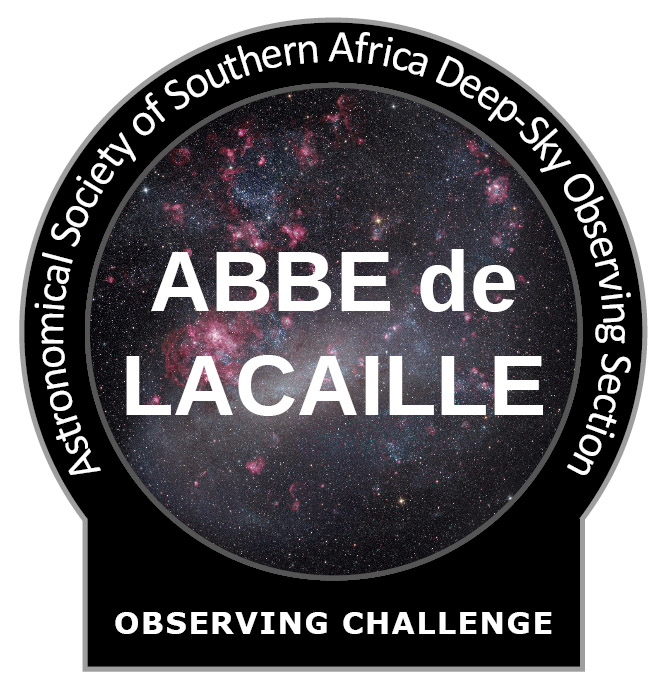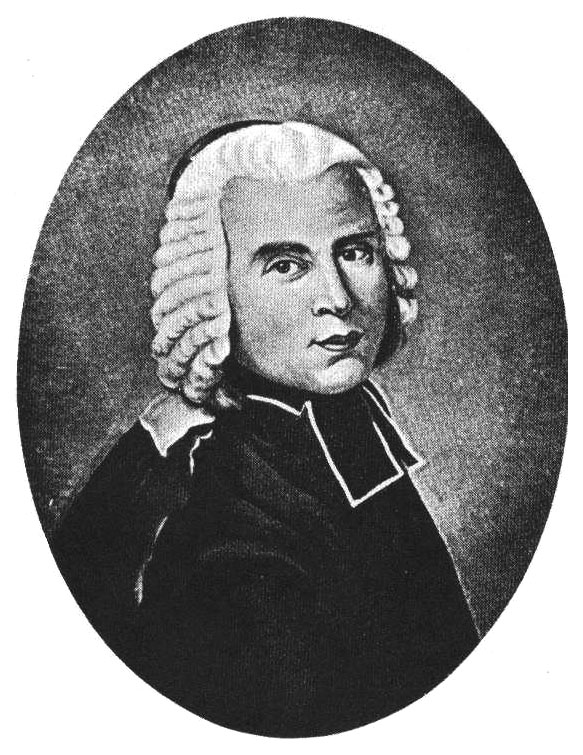Introduction

One of the earliest catalogues of deep sky objects is the one prepared in the 1750’s by Abbe Nicholas Louis de la Caille (1713–1762), who has the distinct honour of being the first person to systematically observe the whole sky. During his stay at the Cape of Good Hope, Lacaille drew up a short list of the most remarkable objects he had come across. Most can be seen with the naked eye and all are visible in binoculars, so a telescope is not essential to see them. Observers who study and record all Lacaille’s objects and submit their observations to the Section may be awarded a General Observer’s Certificate in recognition of their work (given that the observations meet basic quality standards). Observations will also be added to the DOC Deep Sky Database.
Download Lacaille’s catalogue
![]() Download Lacaille’s catalogue as a PDF (181 kB)
Download Lacaille’s catalogue as a PDF (181 kB)
![]() Download Lacaille’s catalogue as an XLS spread sheet [via Google Drive] (15 kB)
Download Lacaille’s catalogue as an XLS spread sheet [via Google Drive] (15 kB)
How do I submit observations?
Send your observations by e-mail to [auke ![]() psychohistorian.org] or by snail-mail to: [Auke Slotegraaf, Director: ASSA Deep Sky Observing Section, 14 Mount Grace, Somerset Ridge, Somerset West, 7130, South Africa]. Sketches submitted by snail-mail will not be returned unless you include a self-addressed & stamped envelope. When submitting sketches by e-mail, make sure they are scanned/photographed at good quality. Don’t hesistate to contact me for further details. I look forward to receiving your deep sky observations!
psychohistorian.org] or by snail-mail to: [Auke Slotegraaf, Director: ASSA Deep Sky Observing Section, 14 Mount Grace, Somerset Ridge, Somerset West, 7130, South Africa]. Sketches submitted by snail-mail will not be returned unless you include a self-addressed & stamped envelope. When submitting sketches by e-mail, make sure they are scanned/photographed at good quality. Don’t hesistate to contact me for further details. I look forward to receiving your deep sky observations!
How do I record an observation?
Guidelines for recording observations can be found in the “Deep Sky Observing Checklist“. You may also want to take a look at the “Deep Sky Observer’s Companion tutorial“, a thorough introduction to deep sky observing techniques.
“As stargazers we should practice what Lee Cains calls ‘the serene art of visual observing.’ We must learn to see with the mind as well as the eye. This means really examining and contemplating the varied scenes before us in the eyepiece. All deep sky objects deserve at least 15 minutes of your time. Glancing at an object once it’s found and then rushing to another and another is like reading only the Cliff’s Notes of the world’s great novels.” – James Mullaney
Lacaille’s story

Lacaille was at the Cape primarily to compile a star catalogue. During his short visit (1751–1752) he accurately recorded positions and magnitudes of no less than 10 000 stars. He also published a list of 42 southern nebulae, which he divided into three types: ‘Nebulosities not accompanied by stars’, ‘Nebulosities due to clusters’, and ‘Stars accompanied by nebulosity. In his report to the French Academy of Sciences, Lacaille wrote:
“The so-called nebulous stars offer to the eyes of the observers a spectacle so varied that their exact and detailed description can occupy astronomers for a long time and give rise to a great number of curious reflections on the part of philosophers. As singular as those nebulae are which can be seen from Europe, those which lie in the vicinity of the south pole concede to them nothing, either in number or appearance. I am sketching out this description and list to serve as a guide for those with the equipment and leisure to study them with larger telescopes. I would have greatly desired to present something more detailed and instructive in this article, but with ordinary refractors of 15 to 18 inches [in length] such as I had at the Cape of Good Hope, I had neither adequate nor convenient enough instruments for this kind of research. Those who do take the trouble to see what has occupied me during my foreign sojourn will see well enough that I did not have time to make that sort of observation.”
“I have found a great number of the three types of nebulosities in the southern part of the sky, but I do not flatter myself to think that I have noticed them all, especially those of the first and third types, because they can only be perceived after twilight and in the absence of the moon. However, I do hope that the list is passably complete in regard to the most remarkable of the three types.” (Quoted from Gingerich)
Evans (1990) notes: “Considering that this list is based on the data from [the star catalogue], that is, almost always one shot of the passing sky in a very small telescope, certainly very inferior to modern binoculars, it is as good as might be expected. One can also reflect that Lacaille seems to have been the first person ever to observe systematically the whole sky, an honor which the present author once ascribed to Sir John Herschel, who used much the same technique with a telescope of some ten times larger diameter from a site some 6 miles south of Lacaille’s. He, of course, did very much better and is the principal source of the southern data in the NGC.”
Lacaille also studied the Magellanic Clouds:
“As a result of examining several times with a telescope . . . those parts of the Milky Way where the whiteness is most remarkable and comparing them with the two clouds common called the Magellanic Clouds, which the Dutch and Danes call the Cape Clouds, I saw that the white parts of the sky were similar in nature, or that the clouds are detached parts of the Milky Way, which itself is often made of separated bits. It is not certain that the whiteness of these parts is caused, according to received wisdom, by clusters of faint stars more closely packed than in other parts of the sky, whether of the Milky Way or of the Clouds, I never saw with the … telescope anything but a whiteness of the sky and no more stars than elsewhere where the sky is dark. I think I may speculate that the nebulosities of the first kind are nothing more than bits of the Milky Way spread round the sky, and that those of the third kind are stars, which by accident are in front of luminous patches.” (Quoted from Evans)
His record of the Coalsack, the prominent dark nebula in Crux, is one of the first on record:
“One can add among the phenomena which strike the eye of anyone looking at the southern sky, a space of about 3 degrees in every direction which seems intensely black in the eastern part of the Southern Cross. This is caused by the contrast with the brightness of the Milky Way which surrounds this space on all sides.”
Who’s completed the Lacaille Challenge?
- Auke Slotegraaf
- John Gill
- (your name could be here!)
Who is busy with the Lacaille Challenge?
- (your name could be here!)
